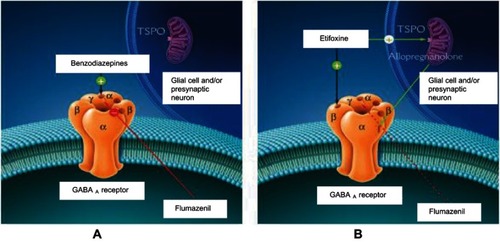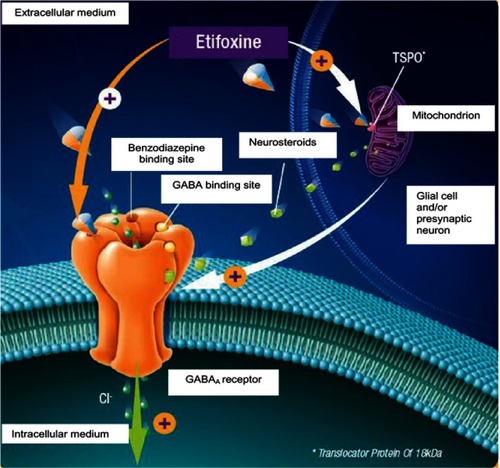Figures & data
Figure 1 Comparison of the mechanism of action of etifoxine and benzodiazepines on the GABAA receptor. (A) Benzodiazepines bind principally within the between the α and γ2 subunits of the GABAA receptor. The nature of the α subunit influences the pharmacological properties of agents binding to it (sedation, myorelaxation, amnesia, etc). Flumazenil specifically inhibits binding of benzodiazepines to the GABAA receptor. (B) Etifoxine acts on the GABAA receptor, both by binding directly to the β2/β3 subunits and by indirectly stimulating neurosteroid production (allopregnanolone). Flumazenil does not affect the binding of etifoxine to the GABAA receptor. Reproduced with kind permission from Biocodex.

Figure 2 Mechanism of action of etifoxine. Etifoxine stimulates GABAergic transmission through two complementary mechanisms. Firstly, etifoxine binds directly to the β2/β3 subunits of the GABAA receptor. Secondly, etifoxine reinforces GABAergic transmission via an indirect mechanism by binding to the TSPO receptor on mitochondria, thus facilitating the synthesis of neurosteroids, which are powerful positive allosteric modulators of the GABAA receptor. Reproduced with kind permission from Biocodex.

Table 1 Etifoxine efficacy and tolerability in patients
Table 2 Etifoxine tolerability in healthy volunteers
